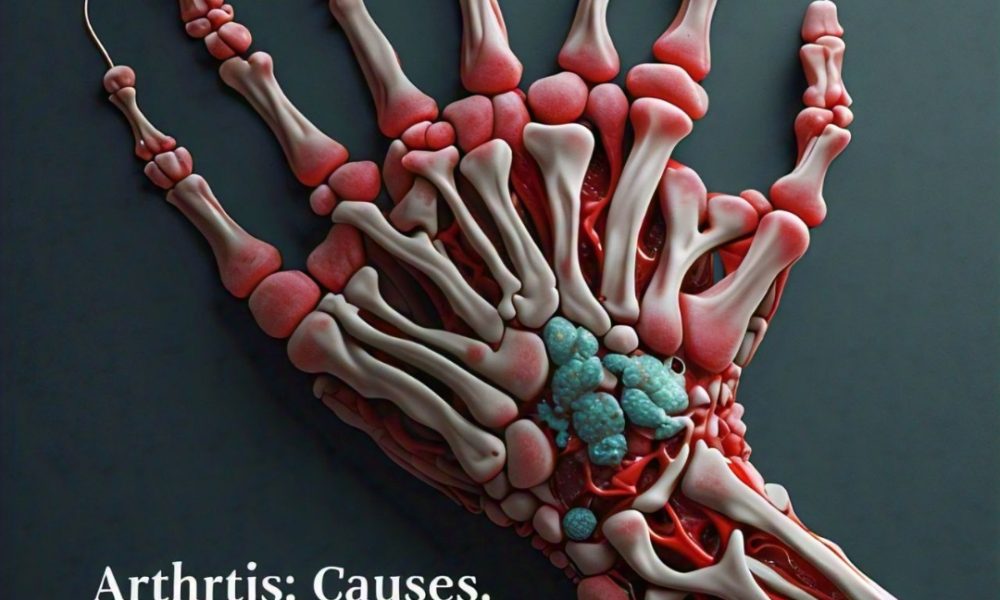Arthritis is a chronic condition that affects millions of people worldwide. It is characterized by inflammation and pain in the joints, which can make everyday activities challenging. In this article, we will explore the causes, symptoms, and treatment options for arthritis, as well as provide tips for managing the condition.
What is Arthritis?
Arthritis is a broad term that refers to a group of conditions that affect the joints. There are over 100 different types of arthritis, but the most common forms are osteoarthritis, rheumatoid arthritis, and psoriatic arthritis.
Causes of Arthritis
The exact cause of arthritis is not fully understood, but it is believed to be a combination of genetic, environmental, and lifestyle factors. Some of the known risk factors for developing arthritis include:
- Age: Arthritis is more common among older adults, with the risk increasing after the age of 40.
- Genetics: Some types of arthritis, such as rheumatoid arthritis, have a strong genetic component.
- Obesity: Excess weight can put additional stress on the joints, increasing the risk of developing osteoarthritis.
- Injury or trauma: A sudden injury or trauma to the joint can increase the risk of developing arthritis.
- Infections: Certain infections, such as Lyme disease, can trigger the development of arthritis.
Symptoms of Arthritis
The symptoms of arthritis can vary depending on the type and severity of the condition. Common symptoms include:
- Joint pain and stiffness: Pain and stiffness in the joints, particularly in the morning or after periods of inactivity.
- Swollen and tender joints: Joints may become swollen and tender to the touch.
- Limited mobility: Arthritis can make it difficult to move the affected joints, reducing mobility and flexibility.
- Fatigue: Arthritis can cause fatigue and a general feeling of being unwell.
Types of Arthritis
There are several types of arthritis, including:
- Osteoarthritis: A degenerative form of arthritis that affects the cartilage and joints.
- Rheumatoid arthritis: An autoimmune form of arthritis that causes inflammation and pain in the joints.
- Psoriatic arthritis: A form of arthritis that affects people with psoriasis, a skin condition.
- Gout: A type of arthritis that causes sudden and severe pain in the joints, often accompanied by swelling and redness.
Treatment Options for Arthritis
While there is no cure for arthritis, there are several treatment options available to manage the condition. These include:
- Medications: Pain relief medications, such as acetaminophen or ibuprofen, can help to reduce pain and inflammation.
- Physical therapy: A physical therapist can help to improve mobility and flexibility, as well as reduce pain and stiffness.
- Exercise: Regular exercise, such as swimming or cycling, can help to improve joint mobility and reduce pain.
- Surgery: In some cases, surgery may be necessary to repair or replace damaged joints.
Managing Arthritis
While arthritis can be a challenging condition to manage, there are several tips that can help to reduce symptoms and improve quality of life. These include:
- Maintaining a healthy weight: Excess weight can put additional stress on the joints, so maintaining a healthy weight can help to reduce symptoms.
- Staying active: Regular exercise can help to improve joint mobility and reduce pain.
- Getting enough rest: Getting enough rest and avoiding fatigue can help to reduce symptoms.
- Managing stress: Stress can exacerbate arthritis symptoms, so finding ways to manage stress, such as through meditation or yoga, can be helpful.
Conclusion
Arthritis is a chronic condition that affects millions of people worldwide. While there is no cure for arthritis, there are several treatment options available to manage the condition. By understanding the causes, symptoms, and treatment options for arthritis, as well as taking steps to manage the condition, it is possible to reduce symptoms and improve quality of life.

